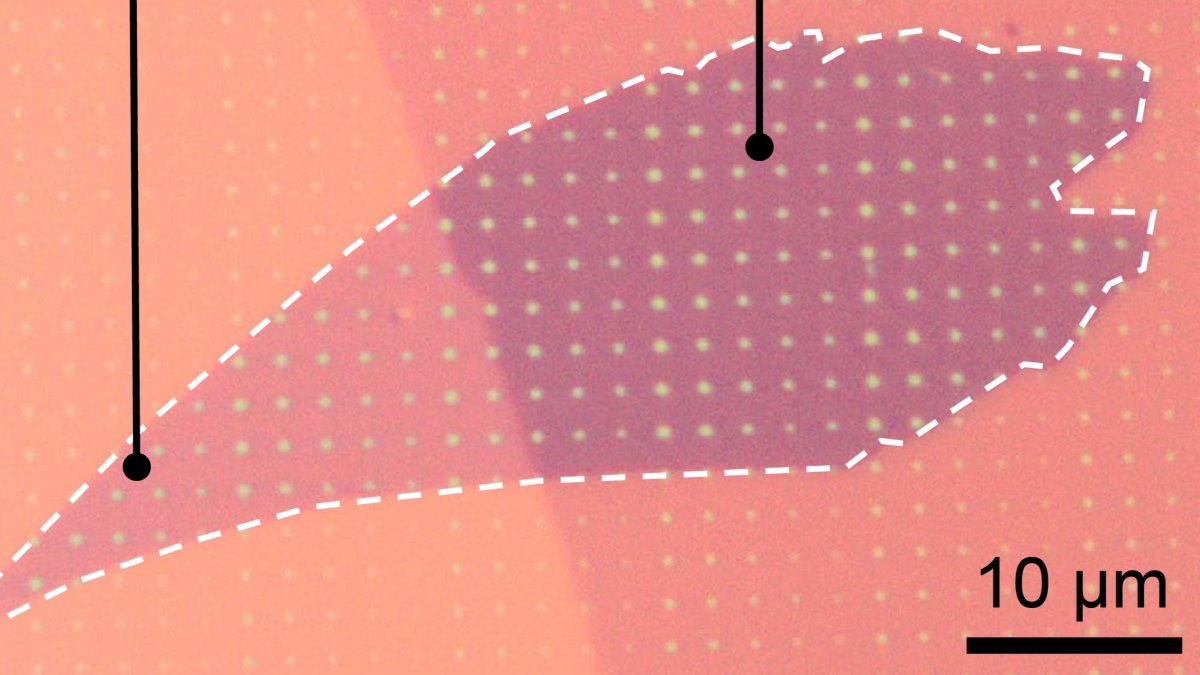Optical micrograph of the monolayer tungsten diselenide sample, with the right-hand side functionalised with PTCDA. Credit: Mark Hersam, Northwestern University
Engineers have developed a new coating technique that will help make quantum light sources more precise and consistent.
The team used an organic molecule called PTCDA to coat a semiconductor and caused it to release single photons at a time. Each photon also had identical energies, which is required if quantum technologies are to function.
The researchers hope these reliable semiconductors will improve the performance of quantum computers.
“The big idea is that we want to go from individual quantum computers to quantum networks and, ultimately, a quantum internet,” says the study’s corresponding author, Mark Hersam of Northwestern University in the US.
“Quantum communication will occur using single photons. Our technology will help build single-photon sources that are stable, tuneable and scalable – the essential components for making that vision a reality.”
The semiconductor used in the study was made of atomically thin – just 1 layer thick – tungsten diselenide.
“When there are defects, such as missing atoms, in tungsten diselenide, the material can emit single photons,” says Hersam.
“Even oxygen in air can interact with these quantum emitters and change their ability to produce identical single photons. Any variability in the number or energy of the emitted photons limits the performance of quantum technologies,” says Hersam.
The team overcame this challenge with their novel PTCDA coating which protects the surface of the tungsten diselenide. They created this coating by depositing the molecules in a vacuum chamber one layer at a time.
“By adding a highly uniform molecular layer, we protect the single-photon emitters from unwanted contaminants,” says Hersam.
“It’s a molecularly perfect coating, which presents a uniform environment for the single-photon-emitting sites.”
The team found that their coating increased the photon’s spectral purity by 87% and also shifted the colour of photons in a controlled manner without altering the semiconductor’s properties.
“While the coating does interact with the quantum emitting defects, it shifts the photon energy in a uniform way,” says Hersam.
“In contrast, when you have a random contaminant interacting with a quantum emitter, it shifts the energy in an unpredictable manner. Uniformity is the key to getting reproducibility in quantum devices.”
With the method being both simple and scalable, the researchers hope that their coating is a perfect solution to creating reliable quantum communication technologies in the future. Efficient quantum technologies could be used to develop ultra-precise sensors or improve cybersecurity by improving secure communications.
The research team is now focusing on investigating additional materials and coating that can produce similar results.
The results from the study have been published in the journal Science Advances.

